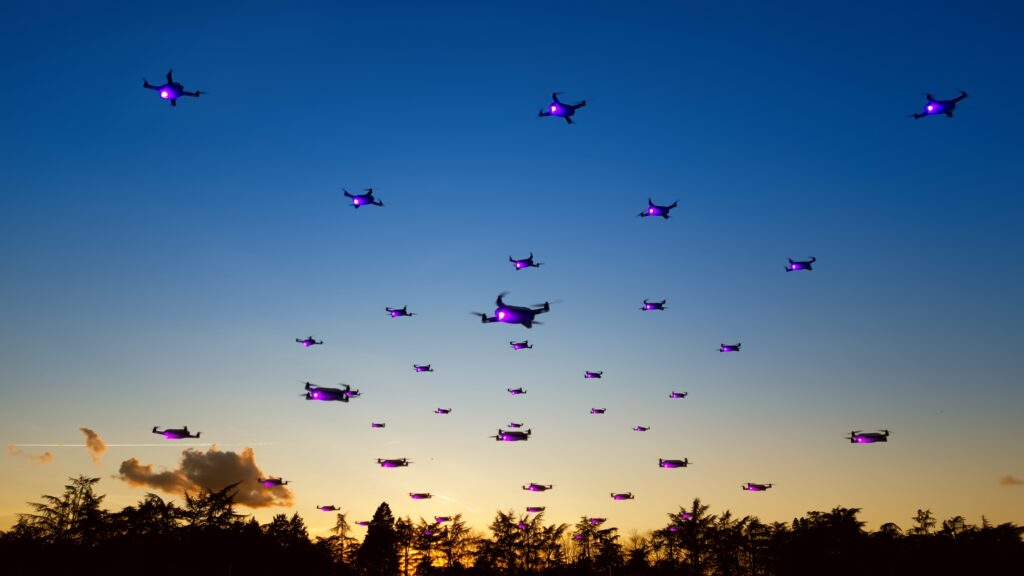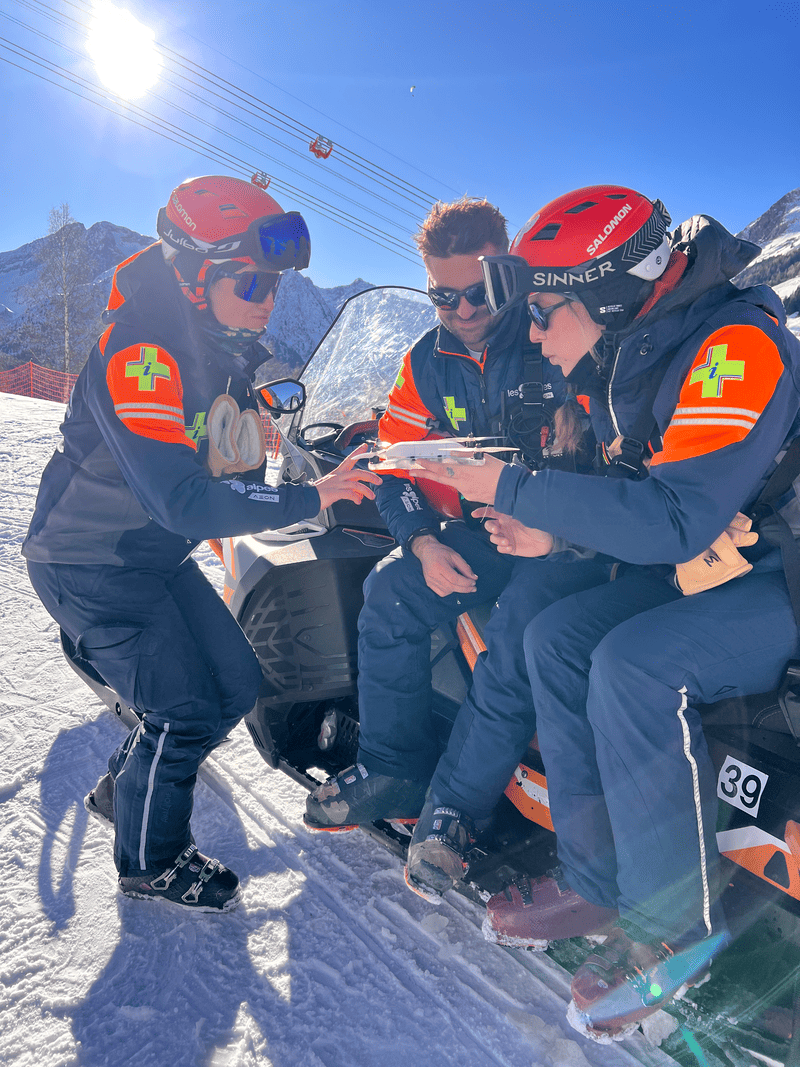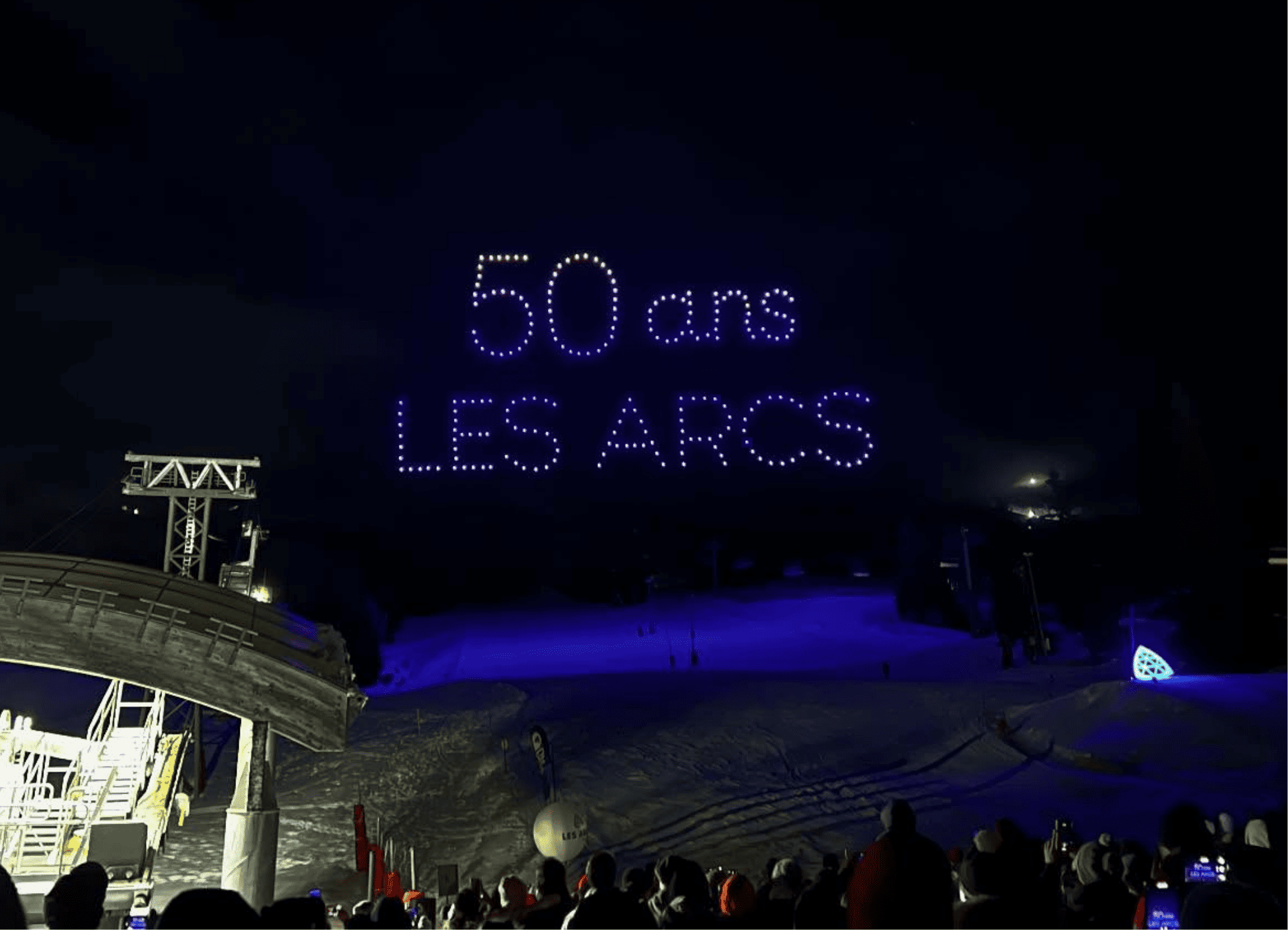WHAT ARE THE SAFETY MEASURES FOR A DRONE SHOW?
THE Drone Light Show, thanks to their ability to create shapes, patterns and animations in the sky, revolutionize the world of entertainment. However, behind the performance lies a significant operational complexity, requiring careful planning and strict adherence to safety measures. This article explores the various aspects of security and inherent constraints to the organization of such events.

Regulatory foundations
The first step in planning a drone show involves a thorough understanding of the regulations in force. These rules vary considerably from region to region. However, Allumee must cover several key aspects when producing its drone shows:
- Permits and licenses: Organizing a drone show typically requires authorization from the local civil aviation authority or similar regulatory body. This often involves submitting a detailed flight plan, proving pilot proficiency, and certifying the drones used.
- Aviation safety: To prevent the risk of collision with manned aircraft, no-fly zones are often established around the performance venue. Drones must operate at a specifically approved altitude and in specifically approved areas.
- Data protection and privacy: With the ability of drones to capture images and videos, respect for privacy and data protection laws becomes crucial, requiring appropriate measures to ensure compliance.
Show planning and design
At the house of Allumee, designing a drone show is a complex process that must take into account the technical and security constraints :
- Design of figures and animations: Creating the animations requires specialized software to program the drones' movements to form precise images in the sky.
- Synchronization and control: Managing multiple drones simultaneously requires an advanced control system to ensure perfect synchronization, minimizing the risk of collision.
- Preliminary tests: Prior to the event, comprehensive testing is essential to identify and correct potential vulnerabilities, both in terms of security and visual performance.
Operational security measures
THE operational security measures are at the heart of a successful drone show, including:
- Weather monitoring: Weather conditions have a significant impact on the safety and feasibility of a drone show, as well as the viewing experience offered to the audience. Planning must include protocols for adverse conditions such as excessive wind or rain, thunderstorms, or severely reduced visibility in heavy fog.
- Crowd Management: Public safety is paramount. Physical barriers and safety zones are established to protect spectators in the event of a drone malfunction.
- Emergency protocols: Emergency procedures must be in place to manage potential incidents, including technical failure of drones, interference with other electronic devices and changing weather conditions.
Technical challenges and solutions
Drone shows face several technical challenges, notably :
- Battery life: One of the main limitations of drones is their flight time, which is limited by battery life. Organizers must therefore maximize the duration of the show and plan for replacement batteries or backup drones.
- Interference and communications security: Drones are controlled via radio signals, which are susceptible to interference. The use of secure and redundant communication technologies is therefore essential to prevent loss of control.
- Flight accuracy: Accuracy is crucial to creating consistent images. This requires drones equipped with advanced navigation systems and precision sensors.
Organizing a drone show is a complex challenge which requires meticulous attention to numerous operational and safety details. By adhering to current regulations, carefully planning every aspect of the show, and implementing rigorous safety measures, it is possible to create stunning events that captivate audiences while ensuring the safety of all participants.
There drone technology continues to evolve, offering new creative possibilities while posing new safety and regulatory challenges. Therefore, Allumee must remain at the forefront of these developments to continue to deliver exceptional experiences safely.
You wish to call on Allumee ? Discover the price of a light show drone.




